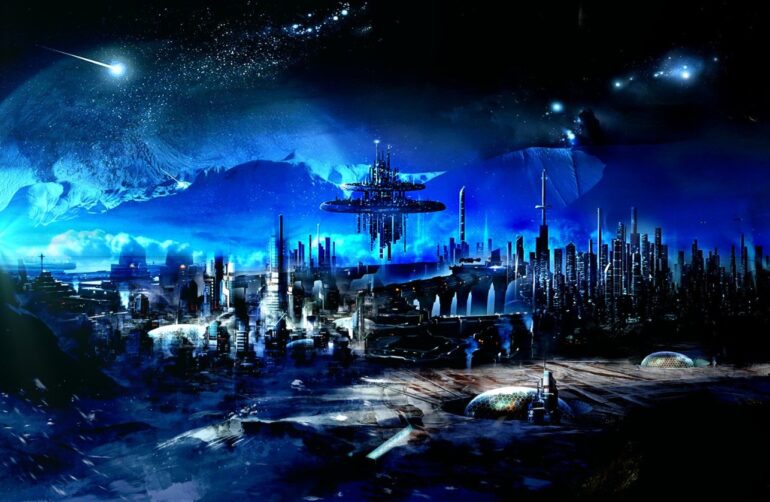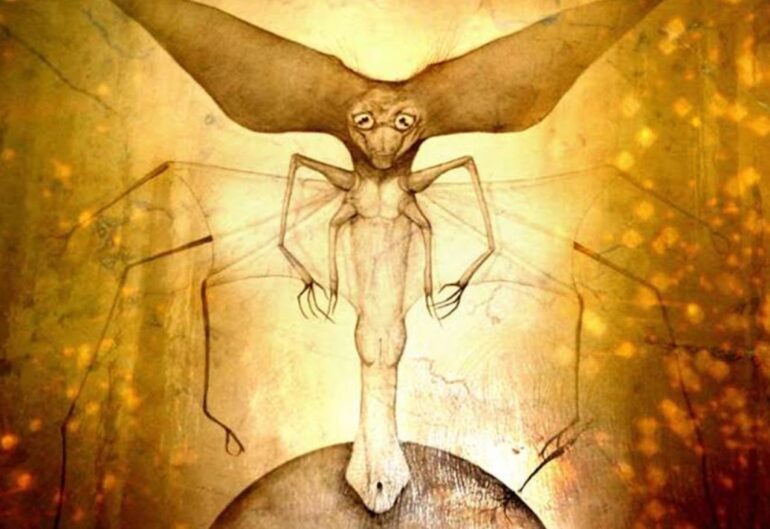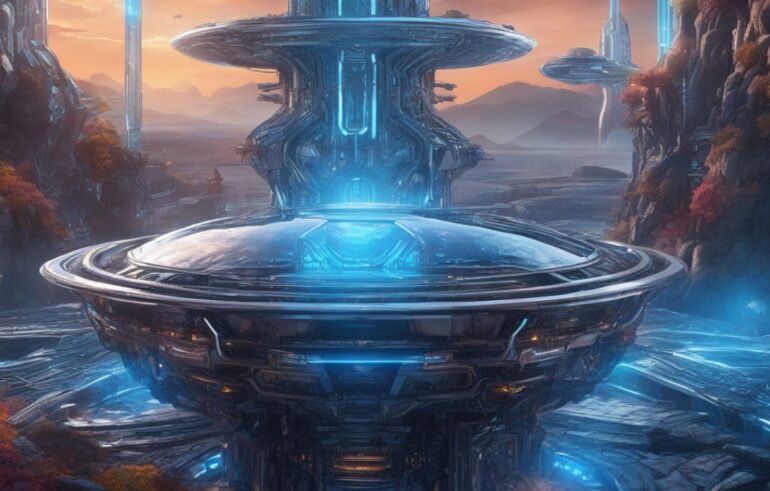Science fiction is a genre that transports readers to otherworldly realms and challenges the boundaries of our imagination. These narratives, characterised by their unique writing styles, play a crucial role in shaping the reading experience. However, the journey through the cosmos of speculative fiction isn’t solely reliant on the written word.
The artistry involved in this genre often elevates the reading experience to new heights.
In this context, science fiction illustrators emerge as pivotal contributors. From creating enthralling cover art to crafting intricate interior illustrations, these artists enrich our voyage through the universe of science fiction. Their work not only complements the narrative but also adds a visual dimension that enhances our connection with the story.
In the following article, we’ll delve deeper into how these illustrators enrich our journey through the cosmos of speculative fiction.
The Allure of Science Fiction Art

Before we dive into the impact of illustrations on science fiction, let’s first understand why art is so integral to the genre. Science fiction, by its very nature, pushes the boundaries of the known universe. It takes readers on journeys to distant galaxies, dystopian futures, and alternate dimensions.
As readers, we crave visual cues that help us navigate these uncharted territories and connect with the author’s vision. That’s where the art comes in.
Creating Immersive Worlds
Science fiction art is a portal to the universe the author has imagined. Whether it’s a spaceship hurtling through the cosmos or a sprawling alien landscape, illustrations give readers a tangible entry point into these fantastical realms. They bridge the gap between words and imagination, making the story more immersive.
Setting the Tone
Art sets the tone for a science fiction story. A well-designed cover can convey a sense of wonder, danger, or mystery, preparing readers for the journey ahead. It’s a visual promise of what’s to come, and it piques our curiosity.
Sparking Imagination
Art sparks the reader’s imagination. A single image can inspire countless interpretations, allowing readers to engage with the story on a personal level. This interplay between words and images fuels our creativity, making the reading experience more interactive.
The Cover: A Gateway to Adventure
The cover of a science fiction book is its first point of contact with potential readers. It’s a crucial element in setting expectations and drawing readers into the story. The role of the illustrator in creating this cover cannot be overstated.
Crafting an Iconic Image
A compelling cover illustration can become an iconic representation of a science fiction work. Think of the stark simplicity of Isaac Asimov’s “Foundation” trilogy covers or the haunting beauty of H.G. Wells’ “War of the Worlds” artwork.
These images have become inseparable from the stories themselves, etching themselves into the collective imagination of readers.
Teasing the Unknown
Cover art is a teaser, a glimpse into the unknown. It offers just enough information to intrigue readers without giving away too much. The skilled illustrator knows how to strike this balance, leaving room for imagination while providing a tantalizing hint of the narrative’s essence.
Evolving Styles
The evolution of science fiction cover art is a fascinating journey in itself. From the pulpy, vibrant covers of the mid-20th century to the sleek, minimalist designs of the 21st century, cover art reflects not only the genre’s evolution but also societal and technological changes.
Today’s covers often incorporate digital art and graphic design, pushing the boundaries of what’s visually possible.
Interior Art: Enhancing the Reading Experience

While the cover may draw readers in, it’s the interior illustrations that deepen the connection between the text and the reader. Interior art can take various forms in science fiction books.
Character Portraits
Illustrations of characters can help readers visualize them more vividly. Whether it’s the rugged space explorer, the enigmatic alien, or the sentient AI, these images provide a reference point for readers to anchor their imagination.
Alien Landscapes
One of the joys of science fiction is exploring alien worlds. Interior illustrations that depict these landscapes expand our understanding of the author’s universe. They offer a sense of scale, texture, and atmosphere that words alone can’t convey.
Technical Diagrams
In hard science fiction, where technical details matter, illustrations of spacecraft, gadgets, and scientific concepts can clarify complex ideas. These diagrams can turn abstract theories into tangible concepts, making the science part of science fiction more accessible.
The Collaborative Process
Creating illustrations for a science fiction book is a collaborative effort that involves close coordination between the author, illustrator, and publisher. The author provides descriptions and guidelines, but it’s the illustrator’s job to interpret these words and breathe life into them.
Authorial Vision
The author’s vision is the foundation upon which the illustrator builds. Detailed descriptions of characters, settings, and key elements in the story guide the illustrator’s work. Authors often have a mental image of their world, and a skilled illustrator can bring it to fruition.
Illustrator’s Interpretation
Illustrators are artists in their own right. They bring their unique style, creativity, and expertise to the project. This interpretation can sometimes lead to unexpected but delightful surprises, as the illustrator adds their own layer of imagination to the narrative.
Publisher’s Role
Publishers play a crucial role in the collaboration. They select the illustrator, oversee the artistic direction, and ensure that the final artwork aligns with the book’s overall design. The cover and interior art must harmonize with the book’s aesthetic and appeal to the target audience.
The Digital Age: New Frontiers in Science Fiction Art

The digital age has ushered in a new era of science fiction art. With the advent of digital tools and platforms, illustrators have more creative freedom and flexibility than ever before.
Digital Painting
Digital painting allows artists to create intricate and vibrant illustrations with remarkable precision. The ability to experiment with colors, textures, and lighting effects opens up endless possibilities for visual storytelling.
3D Modeling
Some illustrators employ 3D modeling software to craft highly detailed and realistic scenes. This technique adds depth and dimension to the artwork, immersing readers in a visually rich environment.
Interactive Art
Innovations in digital media have given rise to interactive science fiction art. Readers can now explore 360-degree illustrations, click on elements for additional information, or even watch animations embedded within ebooks.
This interactive approach blurs the lines between traditional literature and visual storytelling.
Conclusion: The Art of Imagination

Science fiction would not be the same without the talented illustrators who bring its otherworldly landscapes, characters, and concepts to life. Their art enriches the reading experience, offering readers a visual gateway into the boundless realms of speculative fiction.
As we continue to push the boundaries of technology and creativity, the future of science fiction art holds exciting possibilities.
Whether it’s through traditional painting, digital wizardry, or interactive experiences, illustrators will continue to shape and enhance the way we explore the cosmos of the imagination.
So, the next time you open a science fiction book, take a moment to appreciate the art within, for it is a key that unlocks the doors to otherworldly adventures.
